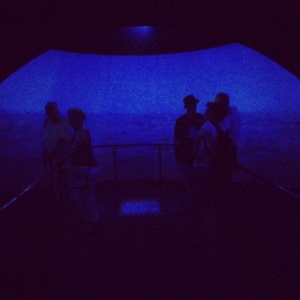Since early beginning of art exhibitions with the Salon exhibition at the Louvre palace in France at mid-18th century, the private association events, and the art side of the World-fairs in England in the 19th century, as well as the beginning of Venice Biennial in 1985, the concept of featuring the country at international exhibitions has evolved drastically, along with the art/science of Curation
The probable approaches of national participations varies between featuring a national or even international pressing calls, or demonstrating the country’s glories and achievements in a certain field, or even exhibiting the country’s finest artists, architects, scientists… Nevertheless a good curation approach is always a must.
This year 6 Arab countries have participated in the 55th run of Venice Biennial; Bahrain, Egypt, Iraq, Kuwait, Lebanon, Syria, and UAE. Though they adopted different approaches … Some of them took the classical approach of featuring a cohort of their prominent artists. Bahrain for example chose 3 of their award winning artists; Mariam Haji, Waheeda Malullah, Camille Zakharia to showcase their works . which can be seen as a sound approach similar to the old days when Greeks and Romans focused on producing monumental artworks to convey their glories to whoever walk their land (except that the message here will be sent globally through the Venice Biennial)
Of course the country’s participation in this case will depend solely on the individual talent of the chosen artist(s), and it is up to the artist to choose motifs related to the reality of the featured country or be completely inspired by his / her own world and personal experience, which might be the case with the three artists of Bahrain pavilion; Malullah chose to tackle the issue of urbanism in Bahrain through the eyes of a rural girl, Haji chose to depict horses -an element well-related to culture and tradition- to be the main element of her fictions composition, and Zakharia tackled a humanist idea trough the sensibility found in letters.
Obviously the three artists ranged on all the spectrum from being driven by national topics to being driven by their own imagination
On the other side another probable approach for national participations at the biennial is to show an artwork to present the country itself; one of its national calls, or maybe a part of its rituals and history.
This approach is adopted by Lebanon, where one artist was chosen to show a solo work explaining an incident from the national history, a true story involving a high political charge; “a letter to a refusing pilot by Akram Zaatari” 35 minute video talking about the Israeli pilot who refused to bomb an elementary school in Lebanon.
The movie received positive critique over all, and it shed light on the historical event in an exquisite artistic frame.
However this approach in general might risk reducing the awareness about the country to the demonstrated aspect, or even to a narrow slot through which the artist depict the national call.
Both approaches are valid, and both has its strengths and weaknesses, therefore the role of the curator comes very essential here to tailor the country’s participation in the most desired and useful way.

